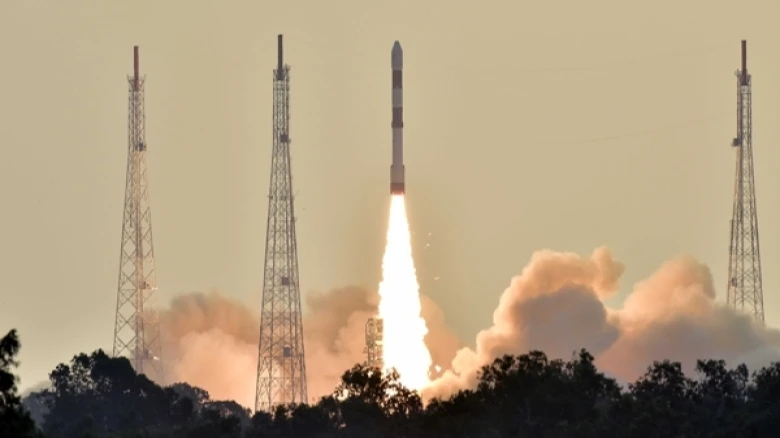Today's mission follows the PSLV-C55/TeLEOS-2 mission, which was launched successfully in April to service consumers in Singapore...
Digital Desk: ISRO successfully launched its tested PSLV rocket carrying seven Singaporean satellites from Satish Dhawan Space Centre, Sriharikota here on Sunday and placed them in their intended orbits.
The primary satellite separated around 23 minutes after lift-off, and it was followed by six more co-passenger satellites, which were put into the intended orbits consecutively, as stated by ISRO.
ISRO tweeted, "PSLV-C56/DS-SAR Mission: The mission is successfully accomplished. PSLV-C56 vehicle launched all seven satellites precisely into their intended orbits. Thanks to @NSIL_India and Singapore, for the contract."
This ISRO project, which follows the much-anticipated Chandrayaan-3 launch earlier this month, is being carried out by its commercial connection NewSpace India Limited.
The primary payload carried by ISRO's trusted workhorse Polar Satellite Launch Vehicle in today's dedicated commercial mission is the DS-SAR Radar Imaging Earth Observation satellite, which was developed through a collaboration between DSTA (representing the Government of Singapore) and ST Engineering, Singapore.
The 360-kg satellite, which will be launched into a Near-equatorial Orbit (NEO) at an altitude of 535 km, will be utilised to fulfil the satellite imagery needs of various organisations within the Singapore government.
ST Engineering intends to use the satellite for multi-modal, high-resolution imaging and GIS services for commercial customers.
The satellite has an Israeli Aerospace Industries-developed Synthetic Aperture Radar (SAR) payload. The payload enables DS-SAR to provide all-weather day and night coverage and imaging at a 1-metre resolution.
After a 25-hour countdown that began on Saturday, the 44.4-meter-tall rocket lifted off majestically from the first launch pad at this spaceport at 6.31 a.m., emitting thick gases on its tail.
The satellites for co-passengers include:
1. VELOX-AM, a 23-kilogramme technology demonstration microsatellite, is one of the co-passenger spacecraft.
2. The ARCADE Atmospheric Coupling and Dynamics Explorer (ARCADE), a research satellite.
3. SCOOB-II, a 3U nanosatellite carrying a payload for technology demonstration.
4. NuSpace's NULloN, a revolutionary 3U nanosatellite that enables seamless Internet of Things communication in both urban and remote settings.
5. Galassia-2, a 3U nanosatellite that would orbit in low earth orbit.
6. ORB-12 STRIDER, a satellite constructed through international collaboration, according to the Bengaluru-based space organisation.
Today's mission is PSLV's 58th flight, and it uses the 17th vehicle with Core Alone Configuration.
A Core Alone version of the rocket, according to the space agency, means the vehicle will not use solid strap-on motors on its sides in the first stage, as opposed to other types such as PSLV-XL, QL, and DL, which use six, four, or two boosters, respectively.
PSLV has acquired the title of 'Workhorse of ISRO' for repeatedly delivering multiple satellites into low earth orbit, according to ISRO.
This is ISRO's second campaign, following the much-anticipated Chandrayaan-3 mission, which launched on July 14 from the Satish Dhawan Space Centre's second launch pad.
The Chandrayaan-3 spacecraft is now in orbit raising manoeuvres. ISRO scientists successfully completed the fifth orbit-raising operation of the Chandrayaan-3 spacecraft on July 25, paving the way for the planned August 1 mission to the Moon after departing Earth's orbit.
Today's mission follows the PSLV-C55/TeLEOS-2 mission, which was launched successfully in April to service consumers in Singapore.

Leave A Comment